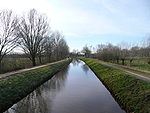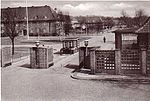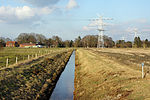ArcelorMittal Bremen

ArcelorMittal Bremen is a steelworks on the banks of the River Weser in Bremen, Germany. An ironworks was established on the site in 1911 as Norddeutsche Hütte - much of the works was destroyed or dismantled during and immediately after the end of the Second World War. In 1957 steel group Klöckner established a new steel works on the same site, Klöckner Hütte Bremen. After growth during the 1960s and 1970s the business began to experience financial problems, and in the early 1990s Klöckner became effectively bankrupt. In 1994 the steelworks at Bremen was acquired by Sidmar, renamed Stahlwerke Bremen; it later became part of Usinor, Arcelor (2002), and ArcelorMittal (2006) through mergers of the parent holding company.
Excerpt from the Wikipedia article ArcelorMittal Bremen (License: CC BY-SA 3.0, Authors, Images).ArcelorMittal Bremen
Hochofenstraße, Bremen Häfen (Bremen-Mitte)
Geographical coordinates (GPS) Address Nearby Places Show on map
Geographical coordinates (GPS)
| Latitude | Longitude |
|---|---|
| N 53.124 ° | E 8.689 ° |
Address
Hochofenstraße
28237 Bremen, Häfen (Bremen-Mitte)
Free Hanseatic City of Bremen, Germany
Open on Google Maps










